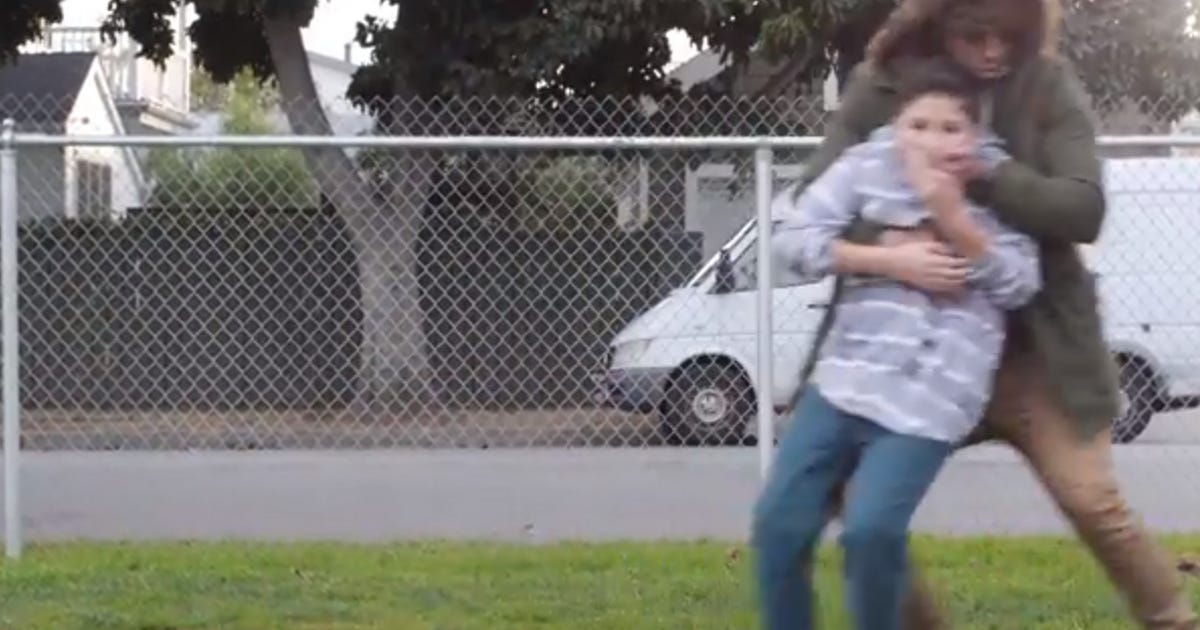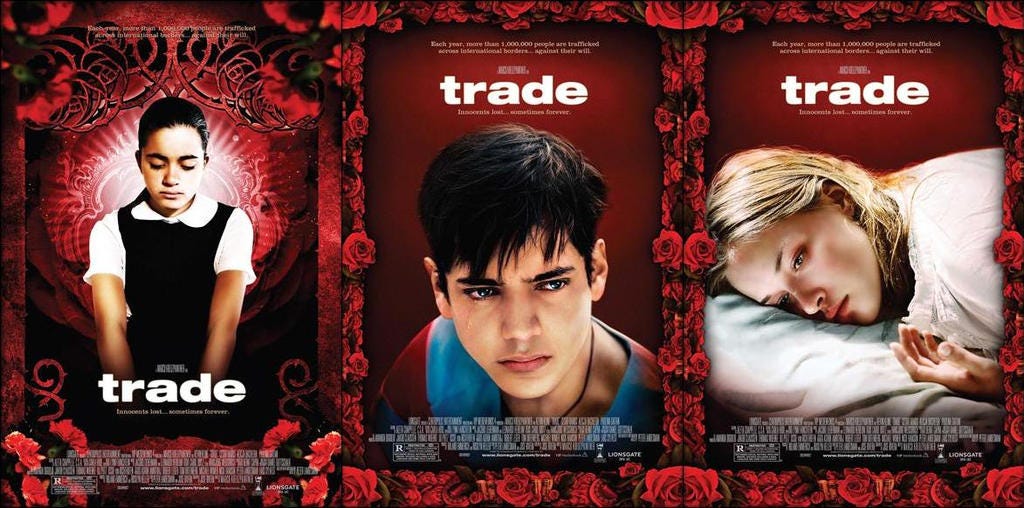Film Review of “Trade,” Stars Kevin Kline, Kate del Castillo, Cesar Ramos, Paulina Gaitan, Alicja Bachleda, 2007. Produced by Roland Emmerich & Rosilyn Heller. English, some Spanish, Polish, Russian.
Rated R – Disturbing sexual material involving minors, violence including a rape, language, and some drug content.
Counselors and other informed people really need to know that human trafficking is happening all around us—in Chicago and worldwide—every day. This film tells stories based on reality—namely that young boys and girls, and women, are being trafficked to the United States to be sold for sex and for servitude.
There are some very gritty scenes and some adult ones. There is a great deal of rough language and there are some rough scenes throughout. While the women and girls are being transported across the United States for delivery in the Northeast, the van takes breaks in pre-determined spots so the traffickers can make money off the girls…
Although I have not been a great fan of Kevin Kline—usually playing boring characters—he is incredible in this movie! He plays a private investigator actually looking for his lost daughter… but he happens upon trafficking starting in Mexico and young people being transported into this country.
Kate del Castillo—a very famous Mexican actress—plays a despicable character who facilitates the trafficking and who lives in a lovely little home in the Northeast. In a role she absolutely hated—to the point it made her sick—this woman deals with connecting the trafficked persons into the situations with US customers buying them.
Cesar Ramos plays the brother of the young Mexican girl who is riding her bike and is quickly kidnapped off the street. He fights so hard to get her back. He teams up with Kline’s character—an unlikely and at first strained friendship—to help not only his sister but also the rest of the kids in the van—and many others later. Their bond is strong, and it gets them good results indeed.
Paulina Gaitan plays the little sister in Mexico who gets abducted when she sneaks out of the house with the bike her brother has gotten her as a birthday present. She rides around the block—just far enough to be seen by some kidnappers in a car who grab her and make her part of the current shipment of persons being trafficked into the United States. She gets thrown in with the current “shipment” destined to be delivered in the US and sold.
The whole group is held there before being taken over the border and taken further away from their homes… a young Polish woman, several young Mexican women and girls, and other people are being trafficked and will serve various uses to the customers planning to buy them—or who have already purchased them—in some cases.
The trafficking in the film is typical of the sort going on through Mexico, but from abroad, and now into the united States in part of a huge network of kidnapped persons, indentured servants, and babies and children who have been abandoned, stolen, and taken across the world—and across the border. Trafficked persons is a big-dollar business in the United States.
The film is mainly in English, but there is also some Spanish, Polish, and Russian. The use of various languages is a great reminder that human trafficking is an international issue. A Polish girl gets kidnapped, a Russian mobster arranges it, and a Thai boy is trafficked and purchased by an American man. This is an important film for use in classes on social studies, international studies, world languages, and in English as a second language training courses too.
Think how important it is in the film that some of the characters can speak other languages. How to save kidnapped children? How to help trafficked women? Language speakers are also needed in law enforcement and in getting victims their rights.
The film is under-rated and perhaps because of its rough scenes and brutal topic it has not been seen by enough people yet. Human trafficking is a huge business—and it goes on throughout the United States. There are even federal grants available for organizations fighting the trafficking and working to come up with networks and technology to follow the trafficking and to stop it.
A moving and sad film, there are also some good scenes and there is also some hope. The very ending of the movie draws it all together and provides some hope for the future. Rescuing the victims is as important and exposing the networks. In this film, both things happen.
.
Editor’s note: The film is important to view—and discuss—but precautions must be taken. People showing the film should remember there is some language and content that is very offensive—so the film should not be shown in a location where children might happen by and see or hear the action and language of the film. There are several very disturbing scenes, as mentioned in the information on the DVD case and in other materials.
---
*Trailer:





